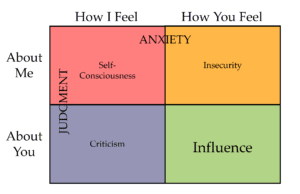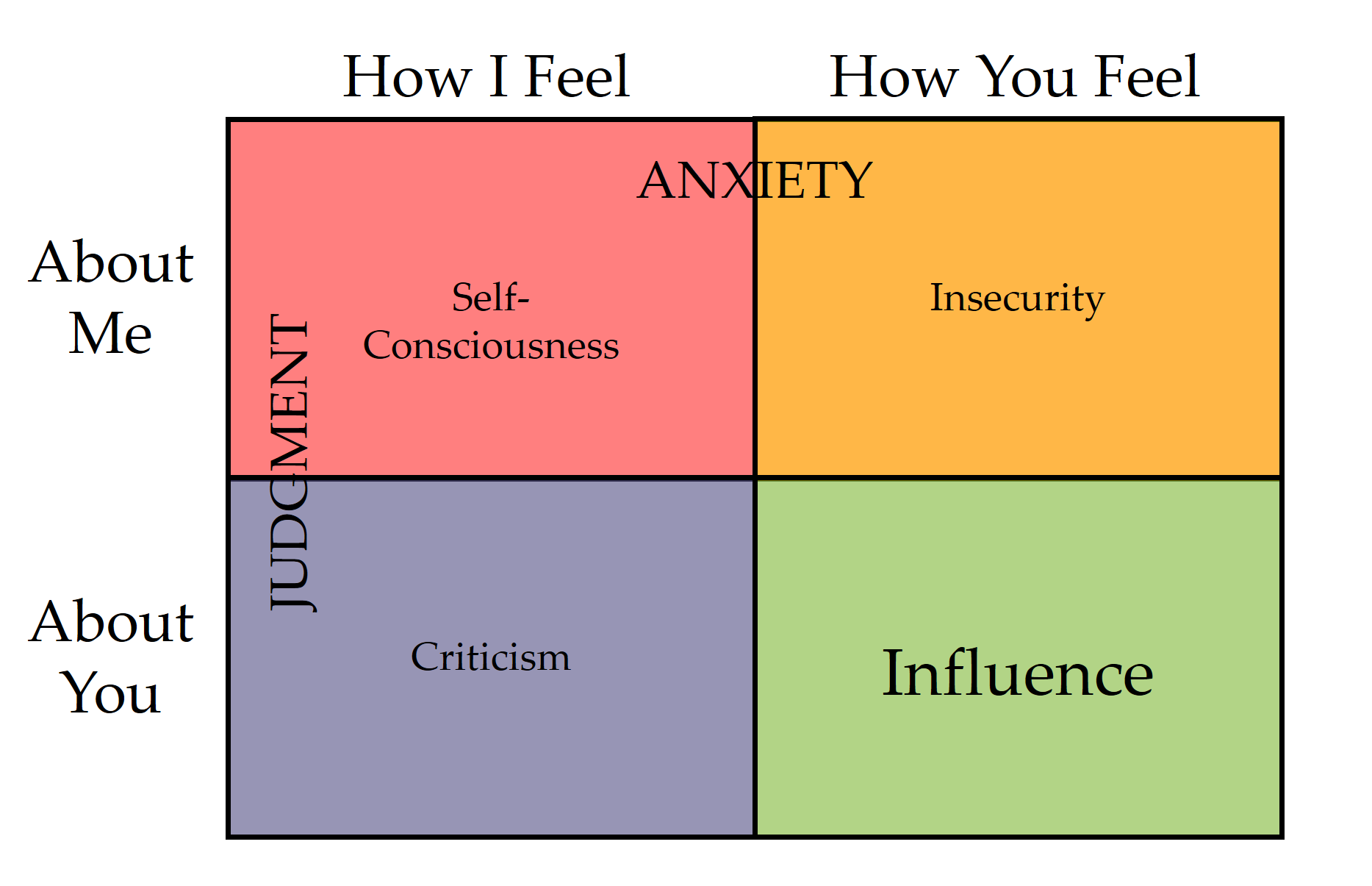This has been a very popular topic for my recent trainings and keynotes, and has a profound implication for leadership.
Think about your own thinking for a moment and notice that whenever you are in a conversation, communication, or interaction with another person, your focus is somewhere. Paying attention to feelings, in the first column my focus is on How I Feel, and in the second column my focus is on How You Feel.
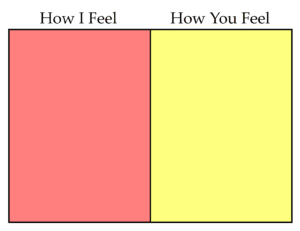
Now who is it about? In the top row, my focus is About Me. In the bottom row my focus is About You.
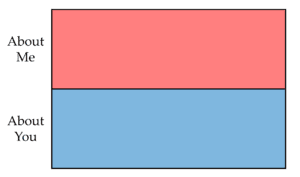
We overlay these two dimensions to form a quadrant model.
With both dimensions combined, we see that our focus could be in one of these four areas. In the upper left my focus is on how I feel about myself. In the upper right my focus is on how you feel about me. In the lower left my focus is on how I feel about you. In the lower right my focus is on how you feel about yourself.
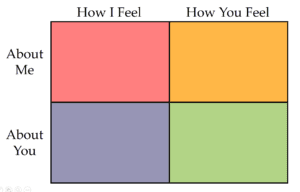
Red – My focus is on how I feel about myself
- Am I good enough?
- I’m not sure if I can do this.
- I can never get my hair to look decent.
- These clothes make me look fat.
- I’m such a failure.
The most common pitfall with a red focus is self-consciousness. Not a healthy or adaptive self-awareness or mindfulness, but the kind that ties us up in knots and has us doubting and judging ourselves.
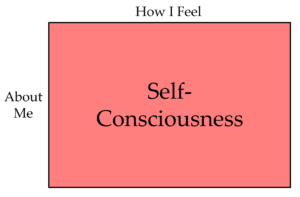
Orange – my focus is on how others feel about me
- Those people are looking at me.
- She probably thinks I’m some kind of whacko.
- He is probably just being nice because he feels sorry for me.
- I wonder if they will like me.
- What would they think if they really knew me?
The most common pitfall with an orange focus is insecurity. We are constantly worried about the opinion of others and looking to external sources for validation and approval.

With either red or orange, as long as it is all about me, we foster and increase anxiety. One of the best cures for anxiety is to remember that it’s not about me.
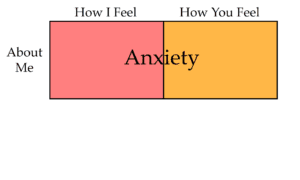
Purple – my focus is on how I feel about others
- I don’t think my boss knows what he is doing.
- Becca thinks she knows everything.
- My spouse needs to shape up.
- I could get so much more done if I weren’t surrounded by idiots.
- I don’t approve of my son’s relationship.
There are some potential pitfalls with our focus being on purple. The most common pitfall here is criticism. Criticism doesn’t have to be real or intended. As long as it is perceived we’re off to the races. The point here is that if my focus is on how I feel about you, you are likely to feel criticized.

With either red or purple, as long as my focus is based in how I feel, we foster and increase a sense of judgment. This is either anxious self-judgment, or the critical judgment of others.

Green – my focus is on how others feel about themselves.
- How is your project coming along?
- Tell me about your daughter and how she is doing off at school.
- It must give you a lot of satisfaction to take such good care of your place.
- I wonder what my spouse is needing today.
- How can I serve you today?
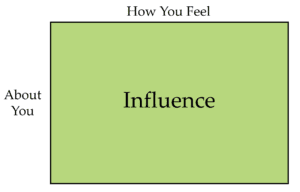
People will naturally love you when you are focused on how they feel about themselves, and work toward enhancing that feeling. The thing is, you can’t do it for this reason, or it will spoil it – that makes it orange. Additionally, you will have a profound influence on other people when your focus is green, but if you do it for the purpose of influencing them it turns purple. It has to be a genuine and authentic focus on how others feel about themselves. The strategic side effect is that people will naturally gravitate toward you and allow you to lead them if you can keep your focus here.
